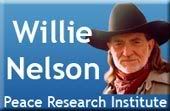And?
From JTS Distance Learning:
P A R A S H A C O M M E N T A R Y
Parashat Mishpatim 5765
Exodus 21:1-24:18
February 5, 2005 26 Sh'vat 5765
This is a reprint of Dr. Schorsch's commentary from 5756
Ismar Schorsch is the chancellor of The Jewish Theological Seminary. Sometimes the smallest of words contains the largest of meanings. Our parashah offers an example worth pondering. It opens with the conjunction "and" (in Hebrew the letter vav at the beginning of the word ve-eleh - "and these are") which is regarded by most translations as too insignificant to translate. Typical is the 1962 New Jewish Publication Society translation, from which I always quote: "These are the rules that you shall set before them " (Exodus 21:1). The opening conjunction, ve, is nowhere to be found.
Yet the rabbinic mind did take note of that introductory vav, freighting it with grand meaning. Nothing in the Torah is merely a throwaway. Accordingly, Rabbi Yishmael declared that the word "and" serves to link what precedes, with what follows. Just as the Ten Commandments, which we read last week in Yitro, were given at Mount Sinai, so were the numerous statutes which we find in this week's parashah of Mishpatim. We should not conceive of the revelation at Sinai narrowly. To the contrary, the point of the letter vav, which joins the two portions, is to expand the contents of revelation greatly.
A similar interpretation is to be found on the final verse of the book of Leviticus: "These are the commandments that the Lord gave Moses for the Israelite people on Mount Sinai "(Leviticus 27:34). The Rabbis stress the words "Mount Sinai," which clearly imply for them that not just the Ten Commandments and the sundry laws of Mishpatim, but also the entire cultic legislation of Leviticus, were revealed to Moses at Sinai. Again, the impulse is the same - to enlarge the scope of Sinai.
The broadest and boldest expression of this expansive impulse serves to introduce the well-known Teachings of the Sages, (Pirkei Avot). A chain of transmission at the beginning affirms the claim that the whole Torah, both the written and the oral, that is, scripture as well as the corpus of rabbinic exegesis, originated at Sinai. The text states: "Moses received Torah from God at Sinai and transmitted it to Joshua. Joshua to the Elders, the Elders to the Prophets, the Prophets to the Members of the Great Assembly."
It is the omission of the definite article from "Torah" which breaks open the meaning of the word. The Torah would refer to the one that is written; Torah is clearly meant to include the interpretations of the Rabbis. Hence, the sage ethical counsels to follow were also revealed to Moses at Sinai. In other words, the whole vast textual tradition of Judaism flows from a single instance of divine-human encounter.
While this fundamentalist claim gives comfort to the soul, it does violence to the mind. It is exceedingly difficult to account for the endless diversity of our tradition on the basis of a single author, divine or human. Divergence is the trademark of the written Torah, no less than of the oral Torah.
This week's parashah confronts us with a striking case. Given the various legal collections in the Torah, subjects are often addressed more than once, with their treatments on occasion, diverging to the extent that they appear to contradict rather than complement each other. Our parashah sets out to define the laws governing ownership of a male Hebrew slave. He is to be condemned to that status for no more than six years, and to be freed as he came in. That is, if his master arranged a marriage for him during his servitude, his wife and children remain the property of the master. After six years, should the slave prefer to stay with his master, he was to be taken "before God" where the master would pierce his ear, fating him to be his slave "for life" (Exodus 21:2-6).
The Bible returns to the topic of Hebrew slaves again within the context of a set of injunctions on poverty in the book of Deuteronomy (15:12-18), but with significant differences. This time, the legislation speaks explicitly about the possibility of either a Hebrew man or woman being sold into slavery. No mention is made whatsoever of the owner intruding into the private life of his slave with an arranged marriage. It seems that the slave is freed at the end of six years with his spouse regardless of when the marriage occurred. Even more noteworthy, the master is instructed to release his slave, properly remunerated for his labor"... do not let him go empty-handed. Furnish him out of the flock, threshing floor and vat, with which the Lord has blessed you"…. (15:13-14). And finally, if the slave chose to serve in perpetuity, the piercing of the ear with an awl was not performed publicly "before God" (i.e., at a nearby sanctuary), but at home in a private ceremony.
To compare these two texts is to discover a common core (limiting the slavery of a fellow-Hebrew to six years) surrounded by a cluster of divergent details. The propensity of rabbinic tradition is to iron out these discrepancies in order to preserve the unity of the Torah. In contrast, modern scholarship accounts for them in terms of multiple authors. Exodus and Deuteronomy do not share the same patrimony. The latter of the two texts, Deuteronomy, exhibits a distinctive style, ideology and humanizing tendency. Unlike Exodus, its author posits the centralization of the cult in Solomon's Temple, hence the slave's ear is to be pierced at home. The author also revises the laws pertaining to the Hebrew slave and other unfortunate souls from a humanistic perspective. The slave is not to be returned to society impoverished or without his or her spouse.
But, the real point of this comparison is to argue that the rejection of Torah mi-Sinai, of the claim for an all-inclusive, single and internally consistent revelation at Sinai, does not diminish the sanctity of our sacred texts. They are holy to me because they record the religious experience and dialogue of an unbroken interaction with God. They command me because millennia ago, Israel generated them and accepted them and died for them, the distillation of an evolving religious sensibility and a national quest, to be a universal inspiration. I revere them because they were a haven and homeland for my tormented people. And I study them because in their ancient, unique and compelling words the echo of God's voice continues to reverberate.
Shabbat shalom,
The publication and distribution of Dr. Schorsch's commentary on Parashat Mishpatim are made possible by a generous gift from Rita Dee and Harold (z"l) Hassenfeld.
Copyright © 2004 Jewish Theological Seminary
Comments to learn@jts web team.














0 comments:
Post a Comment